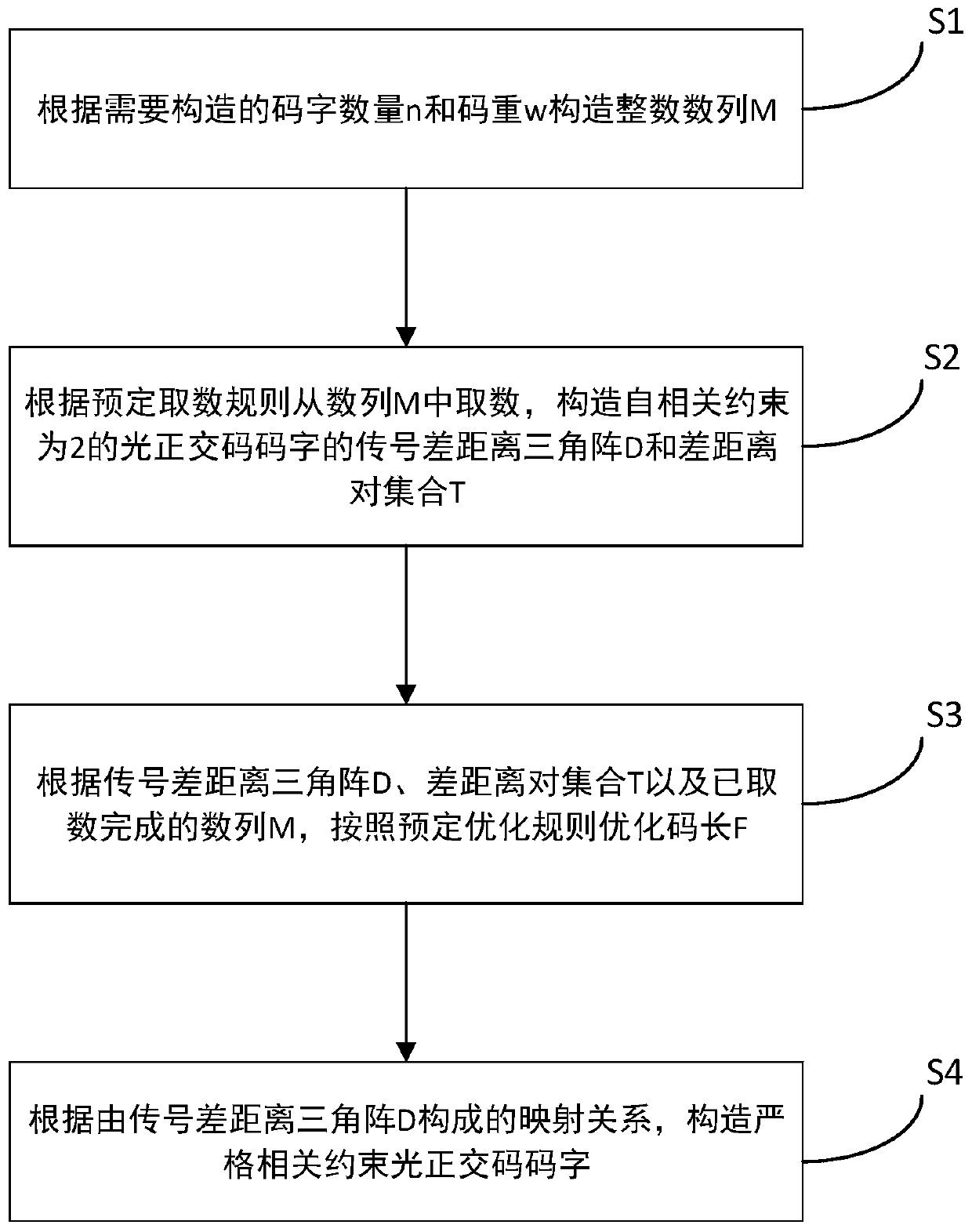A Construction Method of Optical Orthogonal Codes with Autocorrelation Constraint 2
An optical orthogonal code and construction method technology, applied in the field of communication, can solve the problems of impracticality, inability to realize, low coding efficiency of construction method, etc., and achieve the effects of simple construction method, fast construction speed and large code weight value
- Summary
- Abstract
- Description
- Claims
- Application Information
AI Technical Summary
Problems solved by technology
Method used
Image
Examples
Embodiment Construction
[0038] In order to have a clearer understanding of the technical features, purposes and effects of the present invention, the specific implementation manners of the present invention will now be described in detail with reference to the accompanying drawings.
[0039] figure 1 It is a flow chart of the construction method of the optical orthogonal code whose autocorrelation constraint is 2 in the present invention, such as figure 1 Shown:
[0040] The construction method of the optical orthogonal code whose autocorrelation constraint is 2 of the present invention comprises the following steps:
[0041] S1. According to the number of code words n and the code weight w required to be constructed, an integer array M is constructed;
[0042] S2. Fetching numbers from the integer sequence M according to the preset number fetching rules, constructing a triangular matrix D of signal difference distances and a set T of difference distance pairs of optical orthogonal code codewords w...
PUM
 Login to View More
Login to View More Abstract
Description
Claims
Application Information
 Login to View More
Login to View More - R&D
- Intellectual Property
- Life Sciences
- Materials
- Tech Scout
- Unparalleled Data Quality
- Higher Quality Content
- 60% Fewer Hallucinations
Browse by: Latest US Patents, China's latest patents, Technical Efficacy Thesaurus, Application Domain, Technology Topic, Popular Technical Reports.
© 2025 PatSnap. All rights reserved.Legal|Privacy policy|Modern Slavery Act Transparency Statement|Sitemap|About US| Contact US: help@patsnap.com



